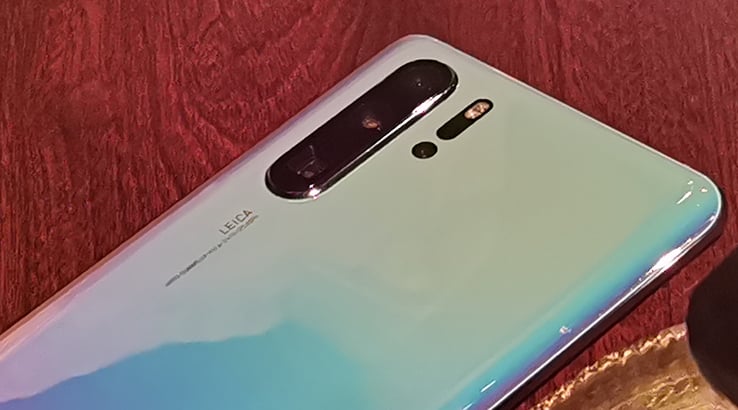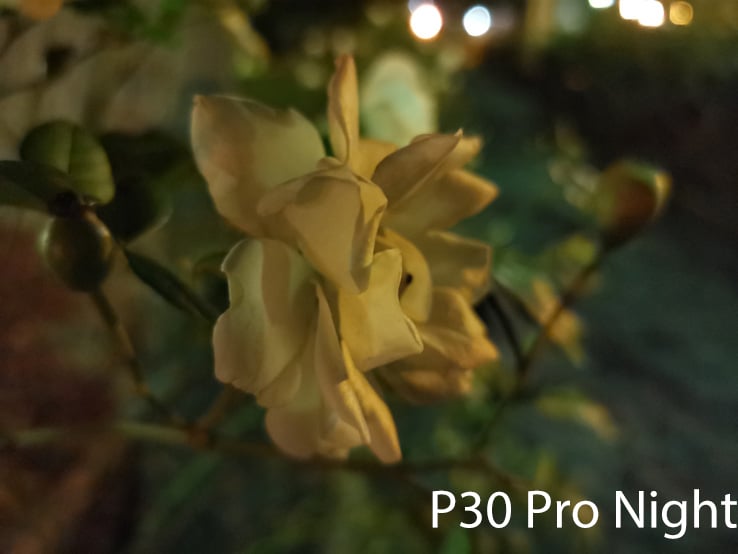
In the premium smartphone space, camera technology is a key feature that manufacturers sell their handsets on. Of course, they argue, our phone has the most superb, lifelike, easy to use camera that will deliver the most amazing and magical photos you have EVER SEEN.
Ahem. Excuse me. I seem to have accidentally swallowed a marketing dictionary there.
Anyway, the reality in the premium space is that if you're shooting in regular daylight, or even a well-lit room, then the results you'll get across any premium camera, and even most mid-range ones will be essentially pleasing most of the time. It's only when you push those cameras, especially in low light that you'll see the differences.
It feels like I was only running these tests a little while ago, and that's because I was. I've already pitted the Samsung Galaxy S10+ against the newest flagships, which you can read here, but with the imminent arrival of the Huawei P30 Pro – and especially given its tie-in to premium camera maker Leica – it was a test worth running again.
This time, I've taken it international, taking some time while at the Huawei P30 Pro launch in Paris to sneak out near midnight and capture some snaps, as well as a selection of Sydney-side photos. Neither Sydney or Paris typically gets to true pitch-black darkness, although equally it's rare to want to take photos under those circumstances. With disclaimers in mind, I travelled to Paris as a guest of Huawei. I travelled around Sydney as a guest of my own car.
For all shots, the default camera application on phones running the latest available software upgrades was used. The app itself was allowed to automatically set focus and exposure in every case, and where phones had distinct "night" modes, those were used for follow-up shots. It's entirely feasible to get different results in pro modes or with custom camera apps, but the vast majority of everyday consumers are simply going to want to point and shoot.
Louvre pyramid test
Is there a more photographed outdoor object in Paris than the pyramid at the Louvre?
Well, alright, the Eiffel Tower.
Maybe the Arc De Triomphe.
But aside from them, the Louvre and its iconic Pyramid have to be right up there. I headed to the most famous art museum in Paris just before midnight to check out how it looks when the lights go down. One side note here: if you're planning on doing similar with multiple smartphones, it would be wise to have plenty of decent travel insurance, just in case one of Paris' seedier residents decides to take an interest in you.

Huawei's P30 Pro does a great job capturing not only the light of the pyramid, but also the detail of the building behind.

The Huawei Mate 20 Pro is a little darker, but it's still a nicely striking image.

Apple's iPhone XS Max loses a lot of that foreground detail, thanks to its less than stellar low light performance.
![]()
The Pixel 3's Night Mode does a good computational job of grabbing plenty of sharp detail. It's a sign of how well Google's algorithmic approach can work.

A rare misfire from the Galaxy S10+ here, with a notably dark tone. It struggled to work out its focus point, and as a result the image is rather muddy.
Louvre interior test
Just inside the Louvre's outer buildings, the light drops and the architecture is really striking. Here I wanted to see how each camera interpreted the diagonally cascading lights with an eye to detail and colour.

The P30 Pro does a good job capturing and detailing multiple light sources while retaining detail on the glass in the background and the columns at the front.
 The Mate 20 Pro makes for a nice picture, although it's a little more washed out than its P30 counterpart.
The Mate 20 Pro makes for a nice picture, although it's a little more washed out than its P30 counterpart.

The iPhone XS Max is a little cold and dark. Which it was if you were standing there, to be fair, but it makes for a less detailed picture as a result.
![]()
That cold and dark motif is the style the Pixel 3 settles for as well, although with a little more detail than the XS Max can muster.

The Galaxy S10+ redeems itself with a nicely composed shot, although the detail at the back of the shot isn't as sharp as on the P30 Pro.
Louvre church test
There's a church just down the road from the Louvre that made for a striking night-time backdrop while still having a highly lit area at the front to challenge how each camera interpreted the scene.

The P30 Pro manages a pleasing composition, giving the statue in the foreground – the monument of Gaspard II de Coligny, if you care – plenty of detail while not losing sharpness on the church above.

By comparison, the Mate 20 Pro's composition is a little murkier, with less detail, although it's still a nicely striking image.

Predictably, the iPhone XS Max struggles. You can still make out the church, for sure, and it beats having no photo at all, but it's not particularly detailed.
![]()
The Pixel 3 has good colour balance for the most part, although it has rather blown out the statue below, and those colours do give it a slightly Disney castle feel.
 The S10+ manages a pleasing balance, although it loses some statue detail along the way.
The S10+ manages a pleasing balance, although it loses some statue detail along the way.
Sydney park path test
A simple enough test; this path has quite variable light across its entire run, and how much light is picked up – and then what each phone's post-processing does with it – makes for a great point of contrast.

The P30's regular camera does good low light work, thanks to its larger than usual sensor. There's an interesting interplay here between its sharpness and the higher light levels you get with the dedicated night mode.

Night mode on the P30 Pro does bring it up a shot, but (as with the Pixel 3) this is sometimes at the cost of presenting slightly unrealistic colours. You may, of course, like that semi-HDR style.

The Mate 20 Pro is still a reliable low-light shooter, and while the P30 Pro outguns it, there's less of an argument for an upgrade if you are already rocking Huawei's late-2018 flagship phone.

The iPhone XS Max struggles in a comparative sense. There's varied light here, but the iPhone makes it look somehow darker than it actually was.
![]()
The Pixel 3 without Night Sight enabled is predictably ordinary.
![]()
Put it in Night Sight mode and it picks up remarkably, although some of those colours aren't quite true.
 The Galaxy S10+ doesn't present the brightest shot, but its balance is good considering it's a quick shot, not a multiple exposure one.
The Galaxy S10+ doesn't present the brightest shot, but its balance is good considering it's a quick shot, not a multiple exposure one.
Sydney flower test
Low light photography isn't just about taking landscape shots. To push each camera, I chose a nearby flower to photograph in low light, with some genuinely varied results.

Up close, there's not a lot of difference in the way that the P30 Pro manages its processing in regular mode, although that's almost certainly down to it shifting to its lesser wide angle lens for macro purposes.

Most of the phones tested picked the flower as yellow, thanks to the nearby lighting. It's not a terrible effect, but it's not exactly accurate either.

The Mate 20 Pro's regular shot has the same yellow tones, but it's a slightly different story in night mode.

Here the Mate 20 Pro outdoes its newer sibling for colour accuracy, with more of the real white tone of the flower peeking through.

A rare win for the Apple iPhone XS Max, with an actually white flower, although a slightly dark one.
![]()
In regular shooting mode, the Pixel 3 goes for the same canary tones as other phones.
![]()
However, in Night Sight Mode it picks the colour the best of any phone tested. The Pixel 3's colour choices are sometimes a little off, but not this time.

The S10+ doesn't do all that well with a close up shot, with a surprising amount of noise and a muted yellow tone.
Sydney park test
Finally, a local sporting ground I've used extensively to test out the low light capabilities of smartphones in the past. It's far from the most exciting composition choice, but the general lack of light makes it a notably brutal test, and one that some phones really struggle with.

The iPhone XS Max isn't a great performer here, although it's fairly indicative of what I could actually see.
![]()
The Pixel 3 without Night Sight can see even less. It's effectively blind.
![]()
In Night Sight mode it does much better, albeit with some slightly oversaturated colour choices.

The Galaxy S10+ grabs as much light as it can, and quite quickly given it's a fast, AI-enabled shot. It's not entirely clear though.

The Mate 20 in regular shooting mode does a decent job with picking up what light it can.

But throwing it into Night mode gives it more scope to pick up finer detail.

However, this is a clear win for the Huawei P30 Pro, which is in a class of its own, even without engaging Night mode.
 The light and detail in this shot are simply amazing, and it's not even pushing the P30 Pro to its highest 409,600 ISO setting. If you wanted to go Pro with this shot, you could get even more detail.
The light and detail in this shot are simply amazing, and it's not even pushing the P30 Pro to its highest 409,600 ISO setting. If you wanted to go Pro with this shot, you could get even more detail.
Verdict
Huawei's hype around the P30 Pro's camera is pretty much justified. As with any smartphone camera you may have to work just a little to get the best results, and it's definitely worth playing around just with the regular shot modes and the night shot mode to see where your preferred exposure and colour balance lies.
As for its competitors, the Galaxy S10+ performed generally well, and the Huawei Mate 20 Pro is also a close competitor that may be worth considering if the Huawei P30 Pro's price range eludes you.
Google's Pixel 3 continues to do amazing things with just one lens, although it's still limited in other ways thanks to that single lens, but it did very well with close-up low light photography.
While Apple's iPhone remains a super-popular choice for online photo taking, it's clear that Apple has a lot of work to do to catch up with its Android competitors.
Compare premium camera phones
Latest mobile phones headlines
-
Best iPhone deals available online in Australia December 2025
17 Jul 2025 |
-
Where to buy the Apple iPhone 16 in Australia
13 Sep 2024 |
-
The best budget phones in Australia for 2025
22 Sep 2025 |
-
Where to buy the Samsung Galaxy S24 in Australia
04 Apr 2024 |
-
Where to buy the Apple iPhone 15 in Australia
18 Sep 2023 |
More guides on Finder Shopping
-
Best iPhone deals available online in Australia December 2025
Here's a comprehensive run-down of the best iPhone deals you can get right now in Australia.
-
The best budget phones in Australia for 2025
Our expert team has tested hundreds of mobile phones to find the 11 best options under $500.
-
Best dual SIM phones in Australia
If you’re looking to run multiple phone numbers from just one handset, we’ve got the best picks for every price bracket and need.
-
Best flip phones in Australia 2025
These are the 4 best flip phones you can buy right now in Australia.
-
The best Android phones of 2025
We've spent the time comparing Android phones to find out which is the best one you can buy in Australia in 2023.
-
Which phones have wireless charging?
Everything you need to know about wireless charging and the phones that support this super-convenient way to keep the power flowing to your handset.
-
Top sites to buy mobile phones online
See the online stores offering an unrivalled selection of mobile phone models.
-
What resolution does my phone camera actually need?
Not sure what resolution you need on your phone's camera? This guide explains the features you really need to check on your smartphone.
-
The 10 best phones in Australia 2025
We've ranked the top 10 smartphones you can buy in Australia right now based on hundreds of hours of hands-on testing.
